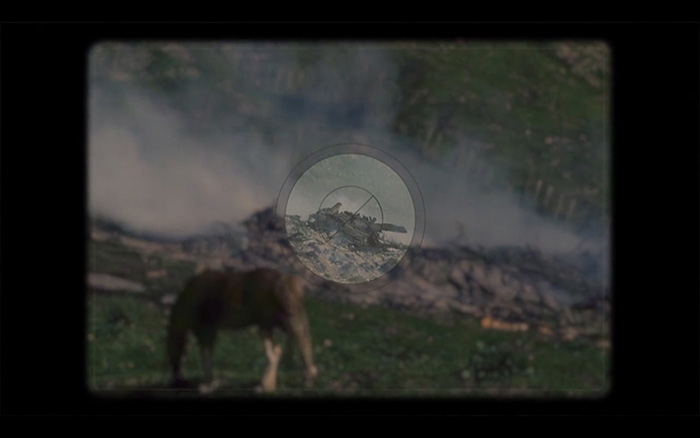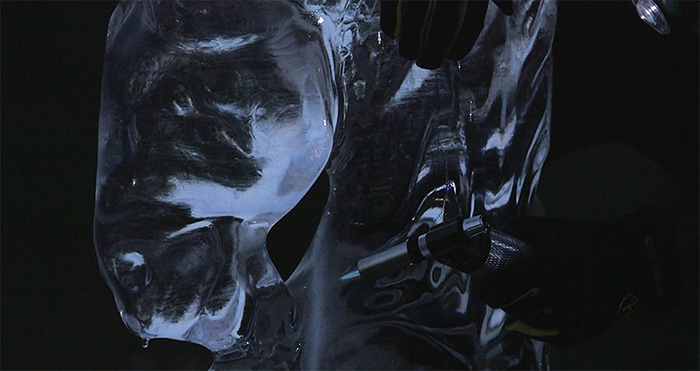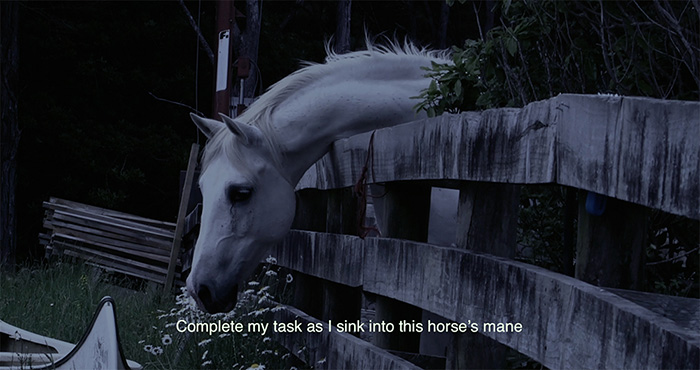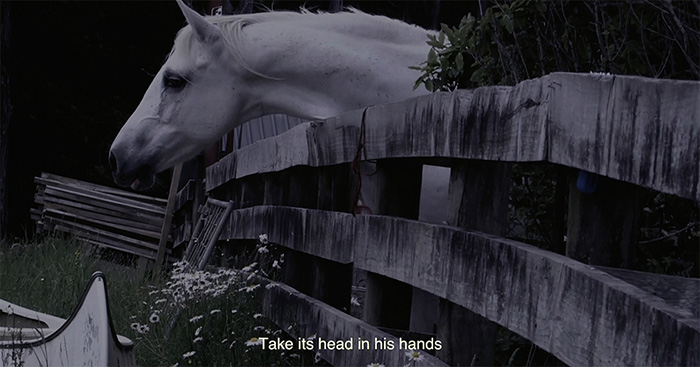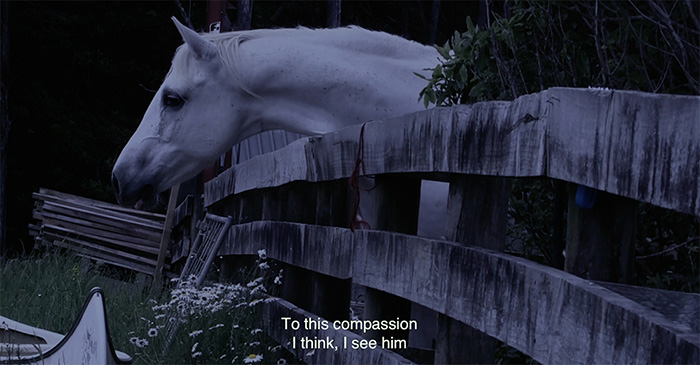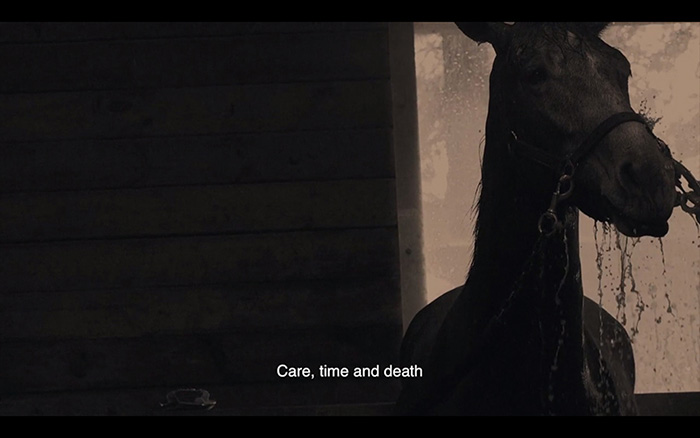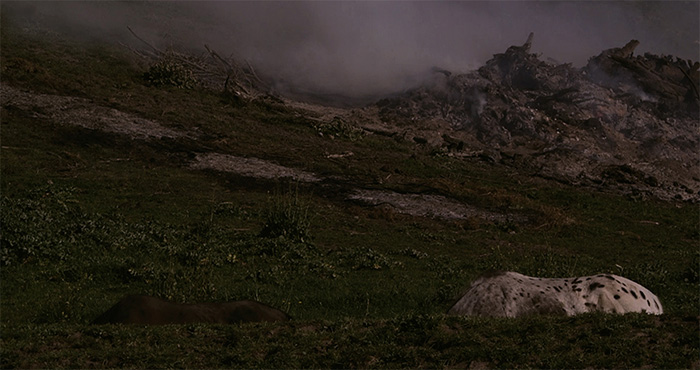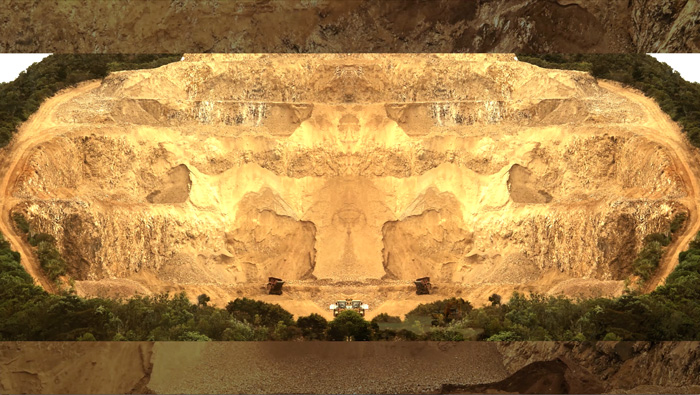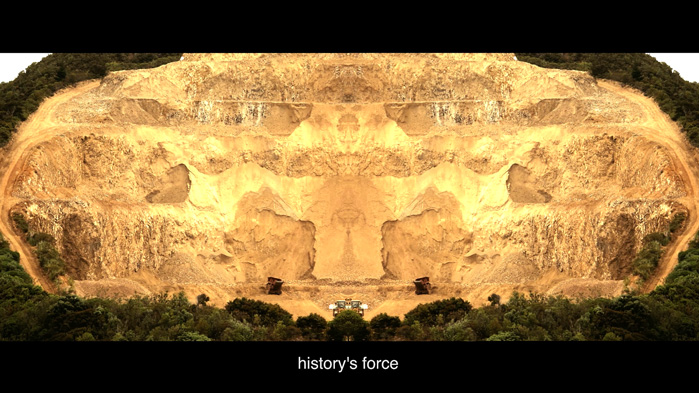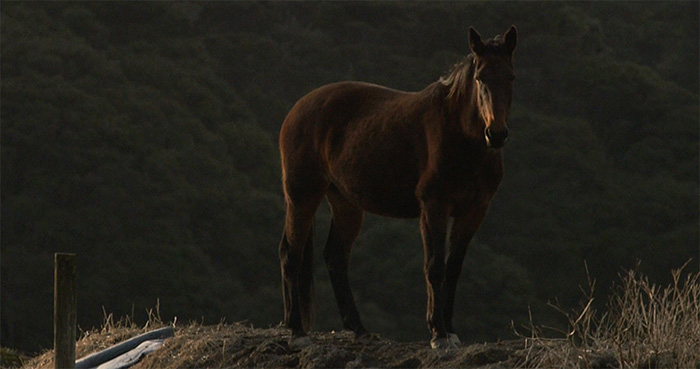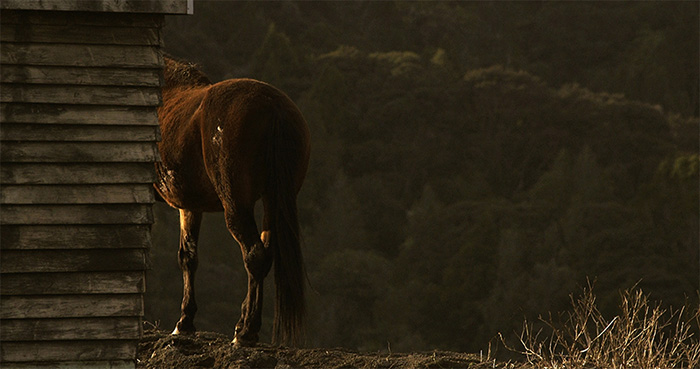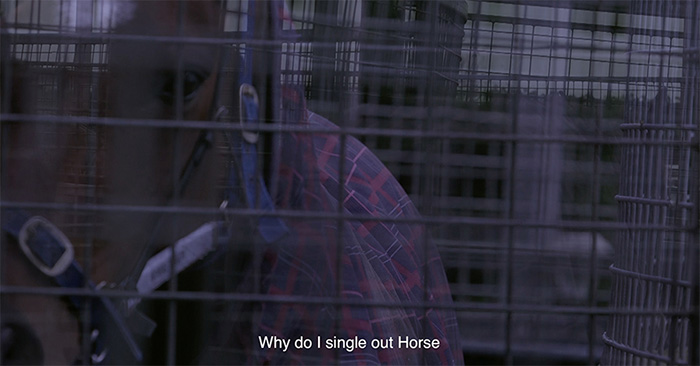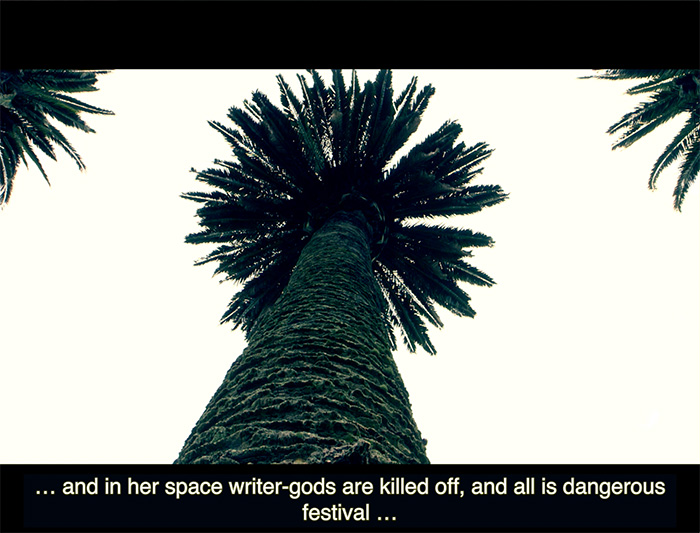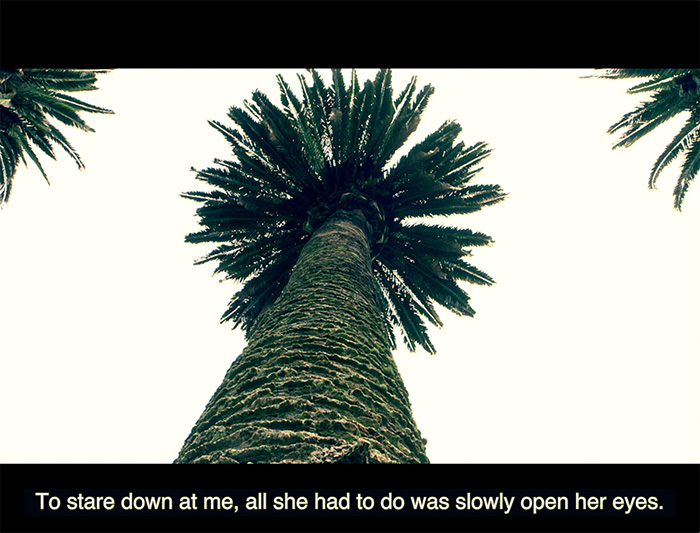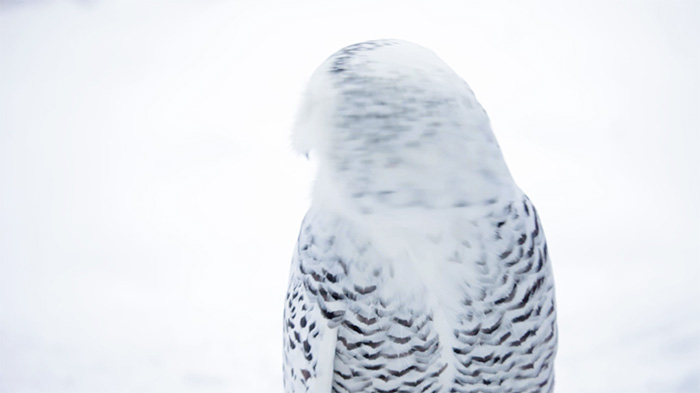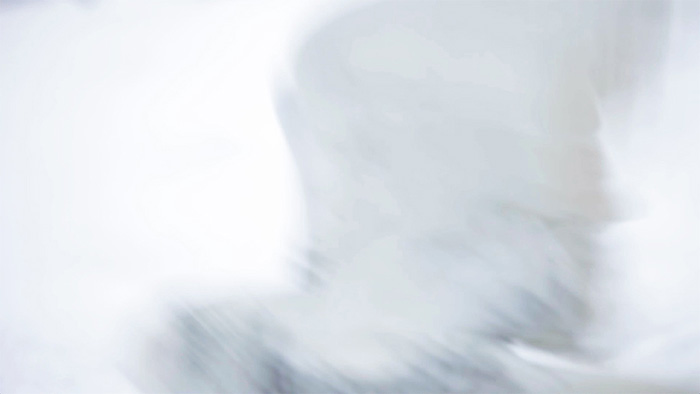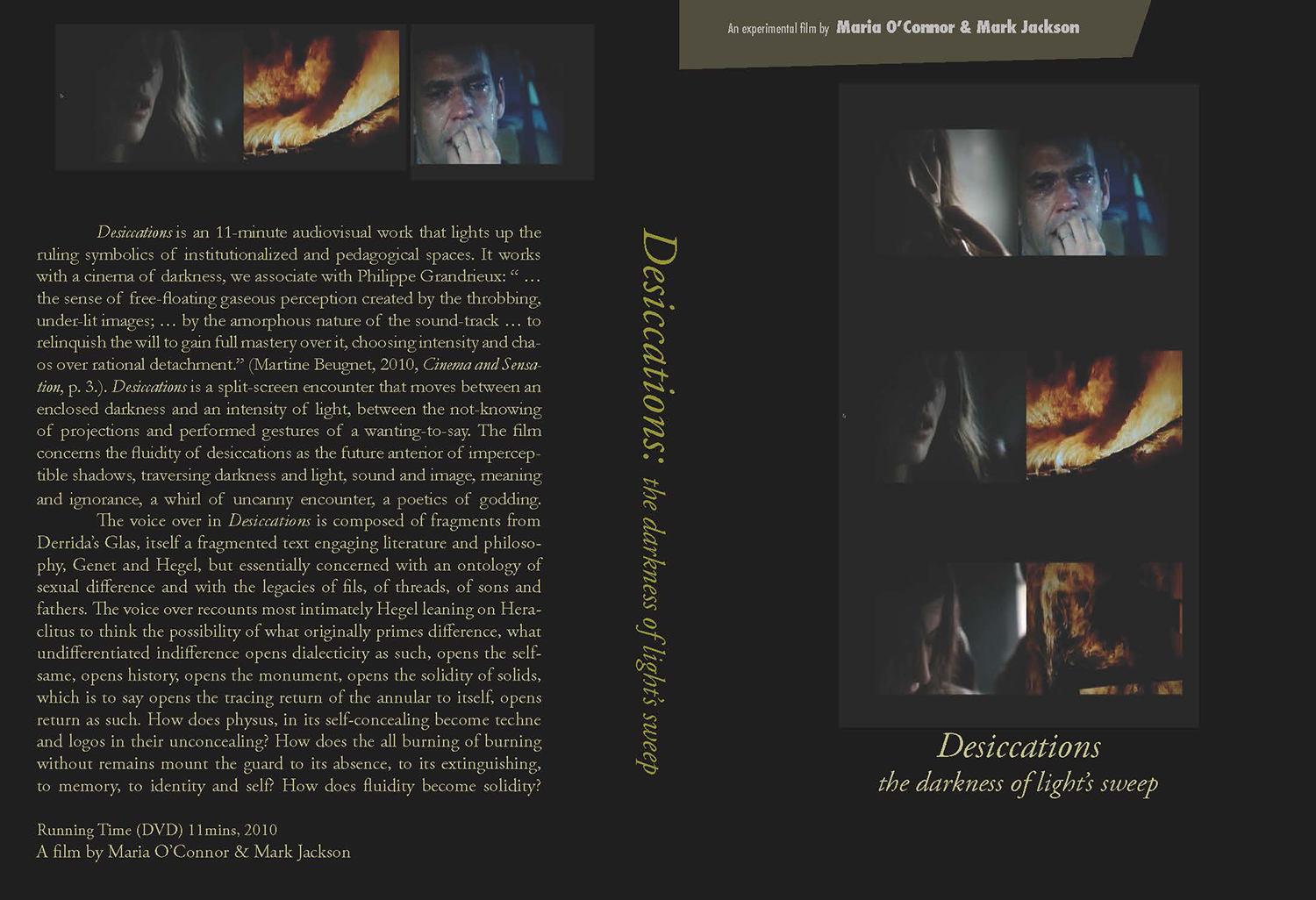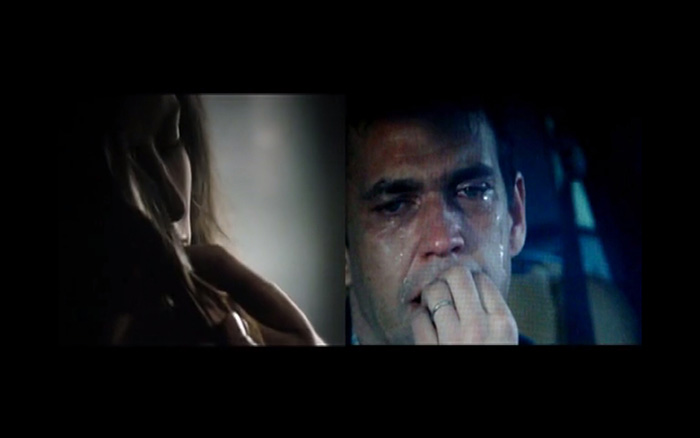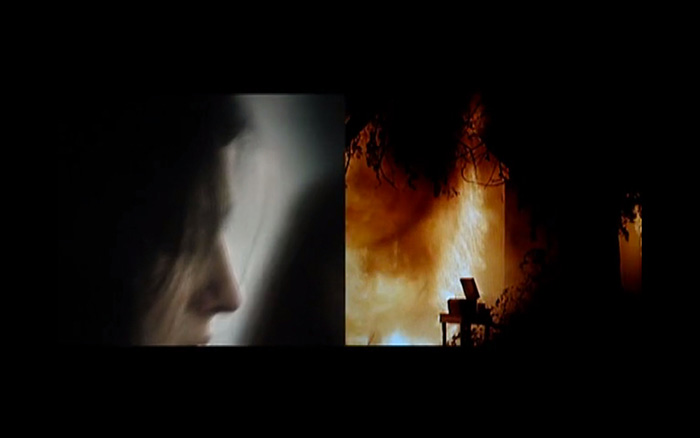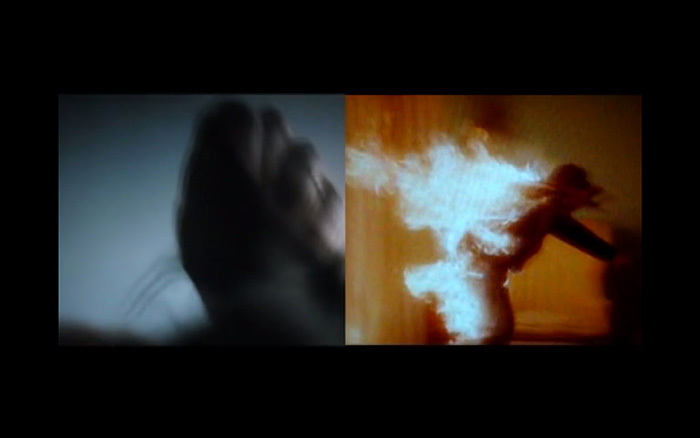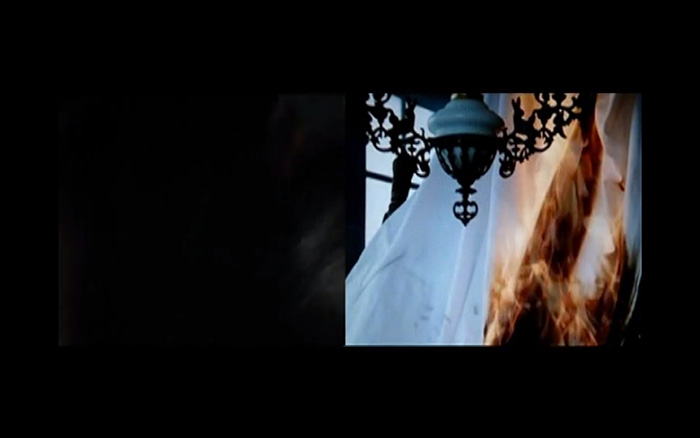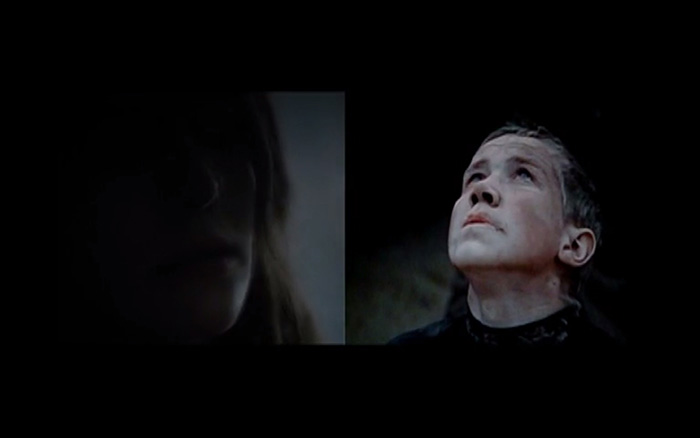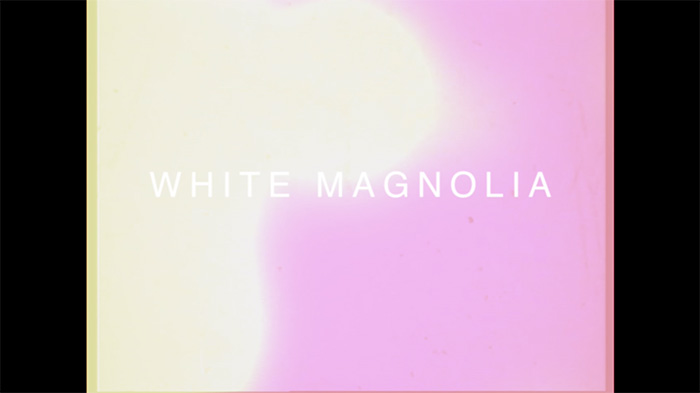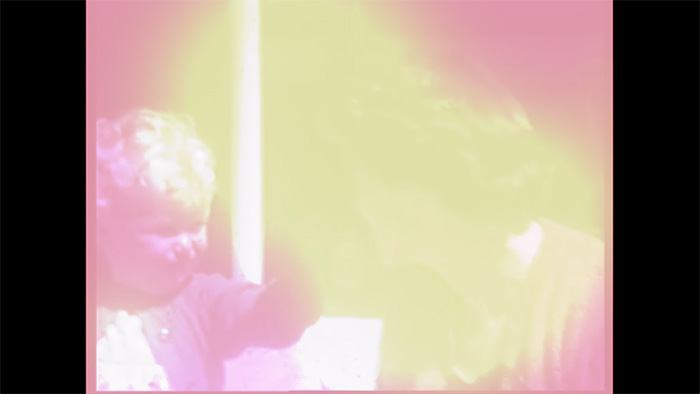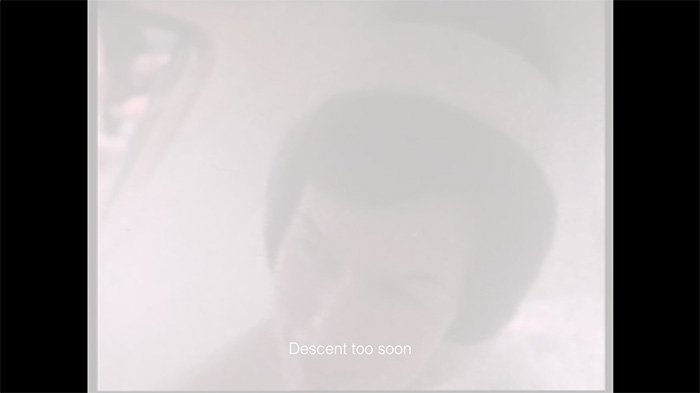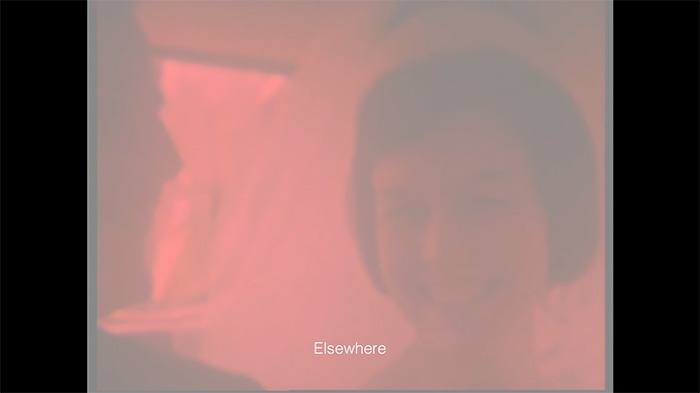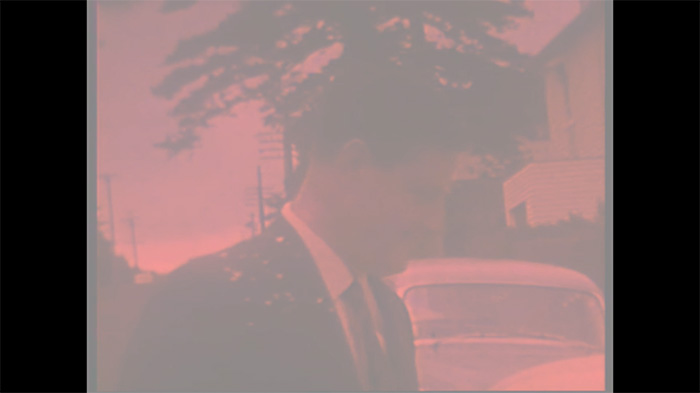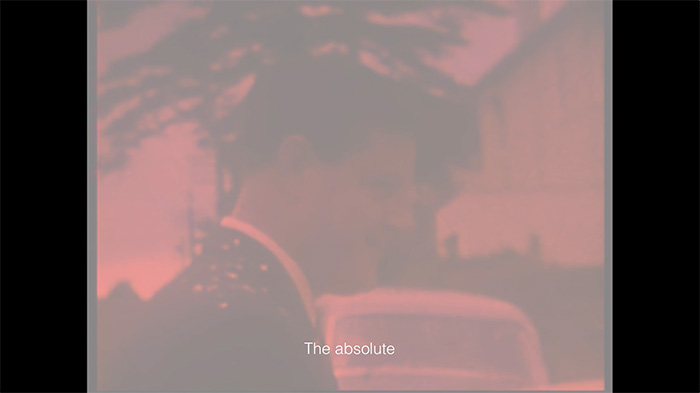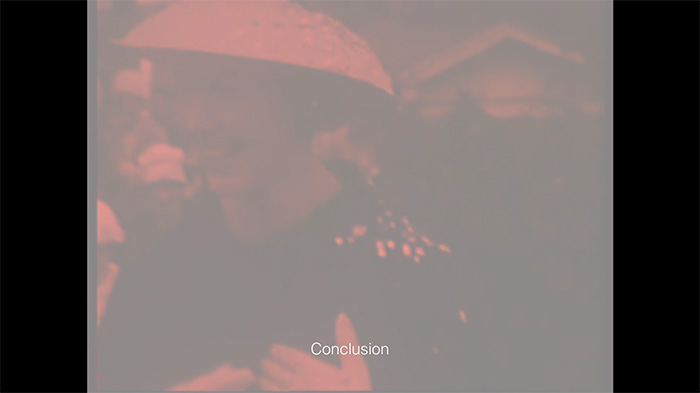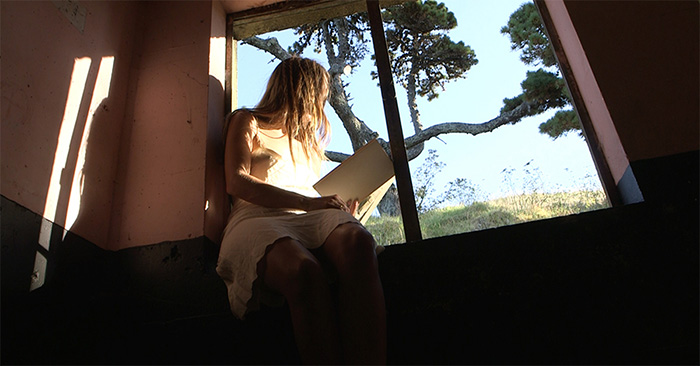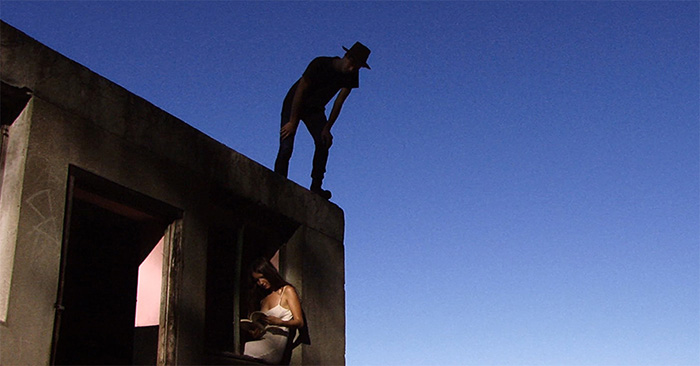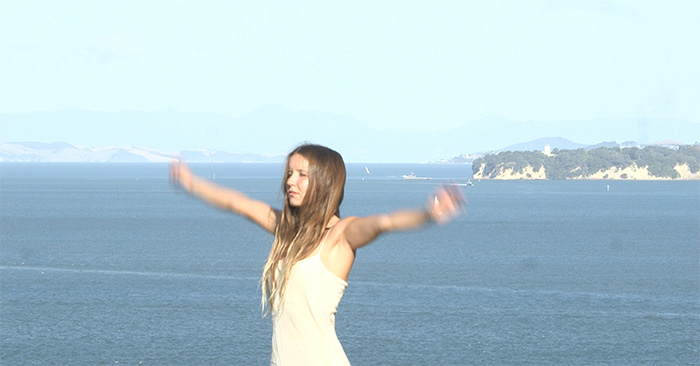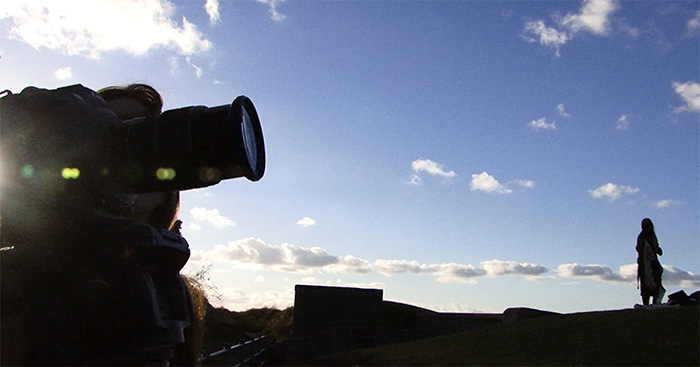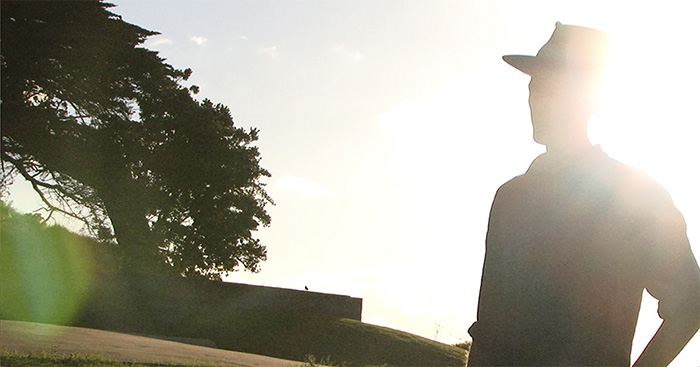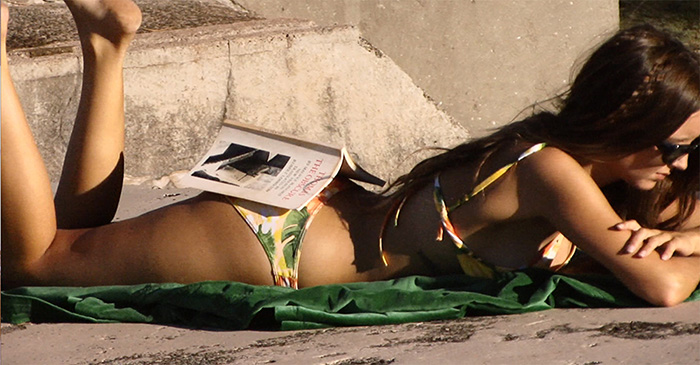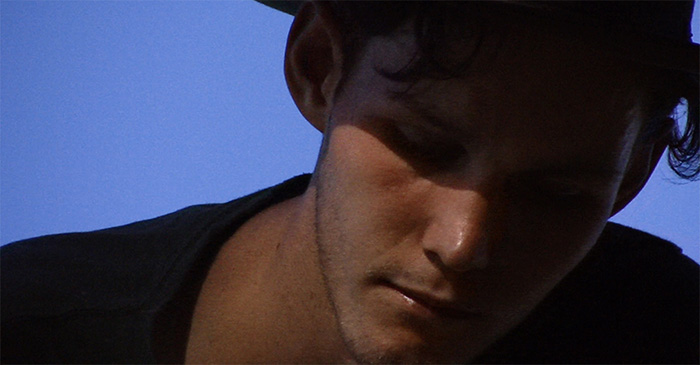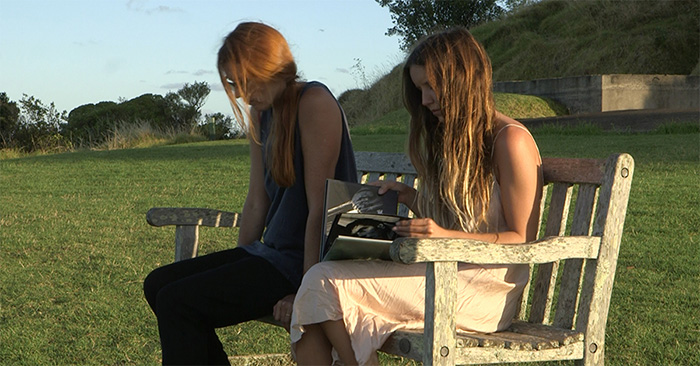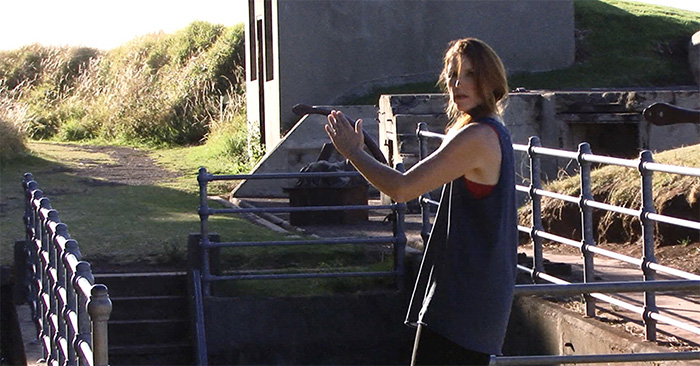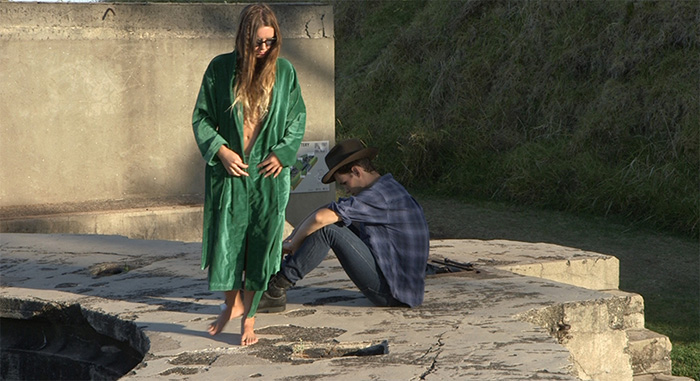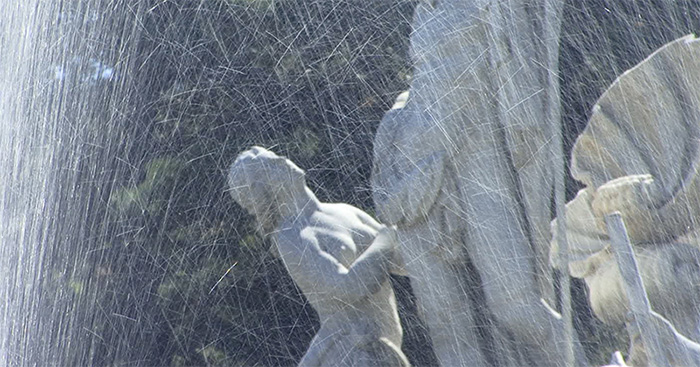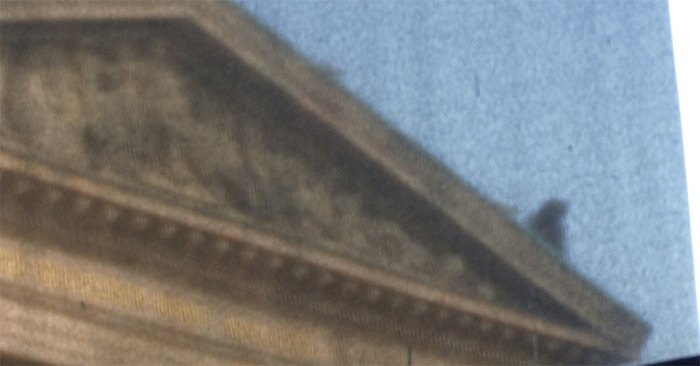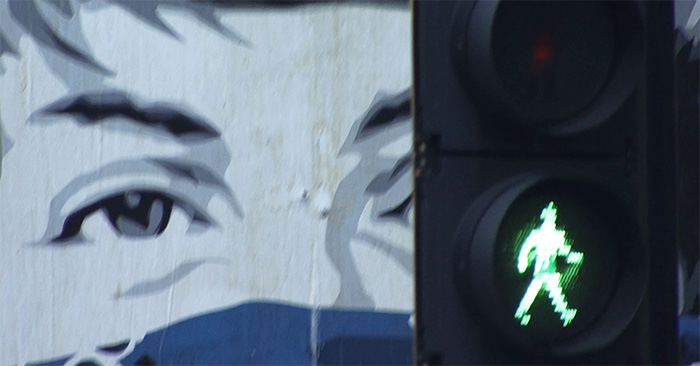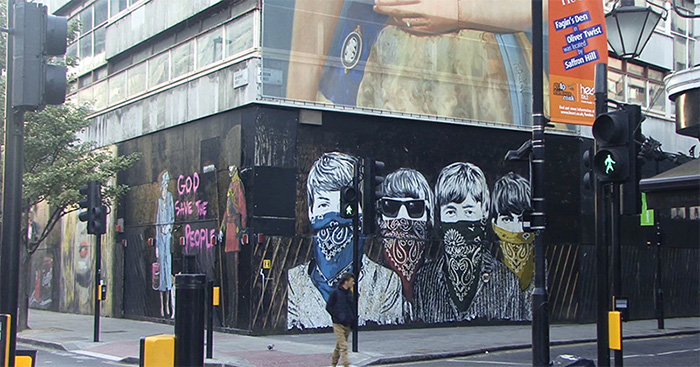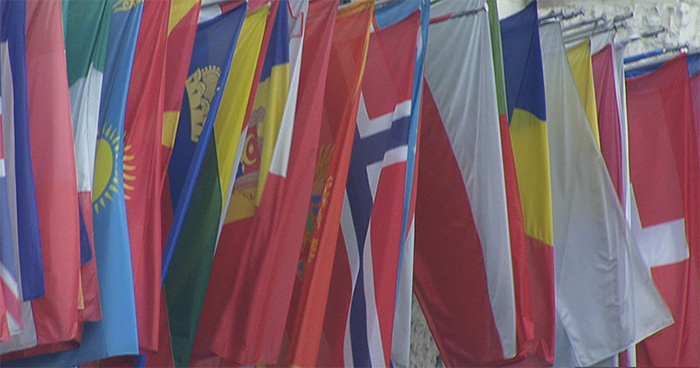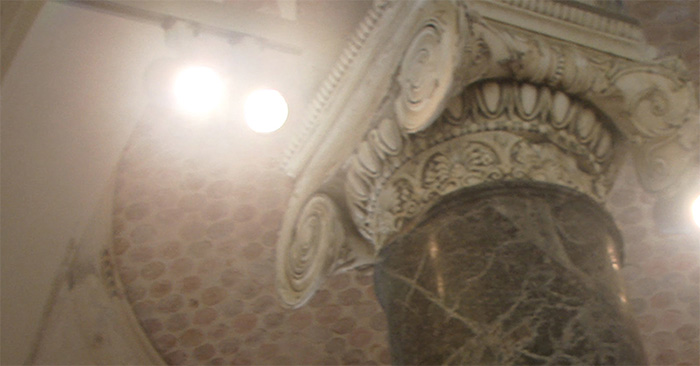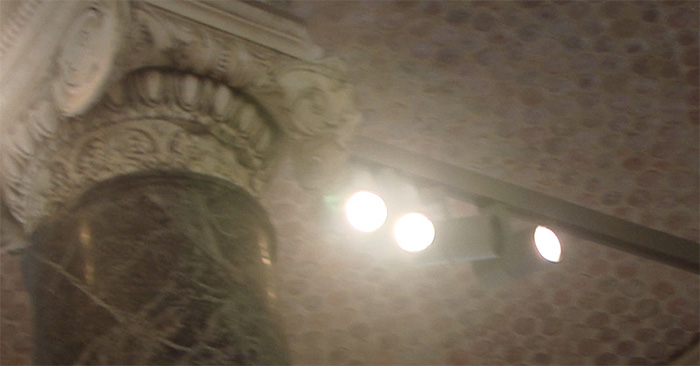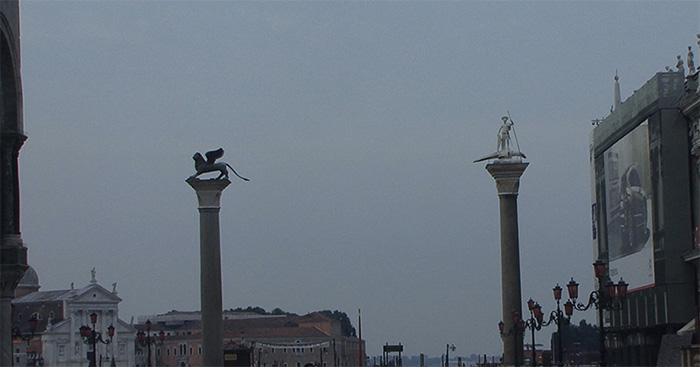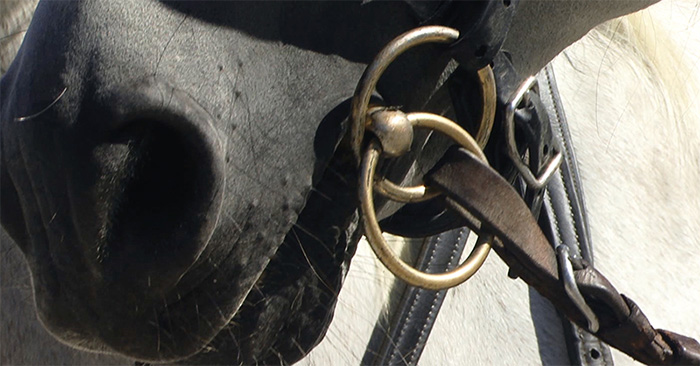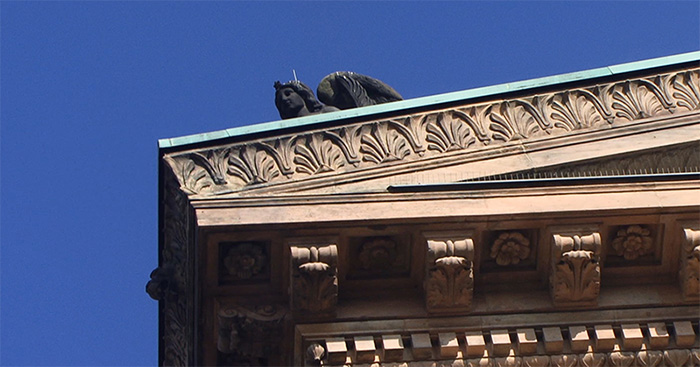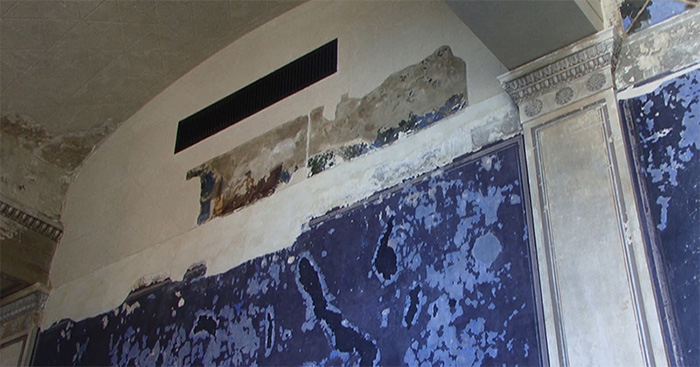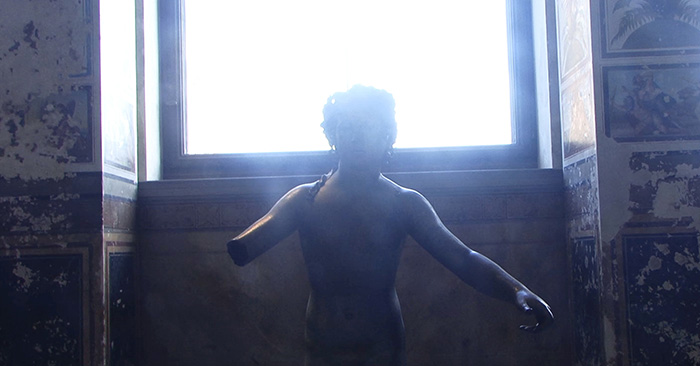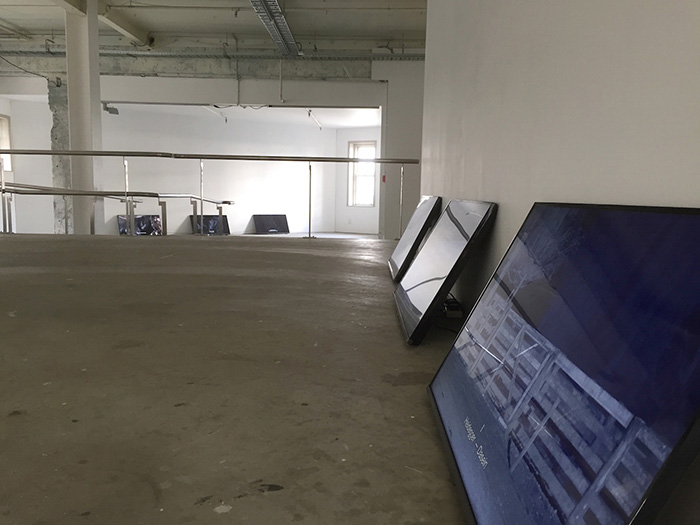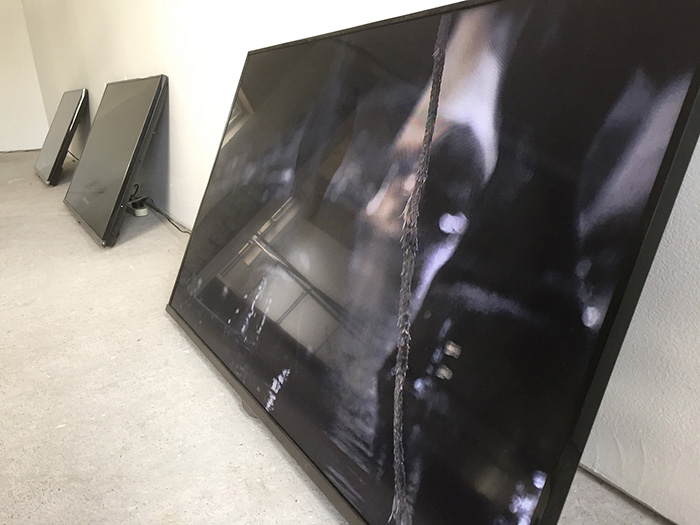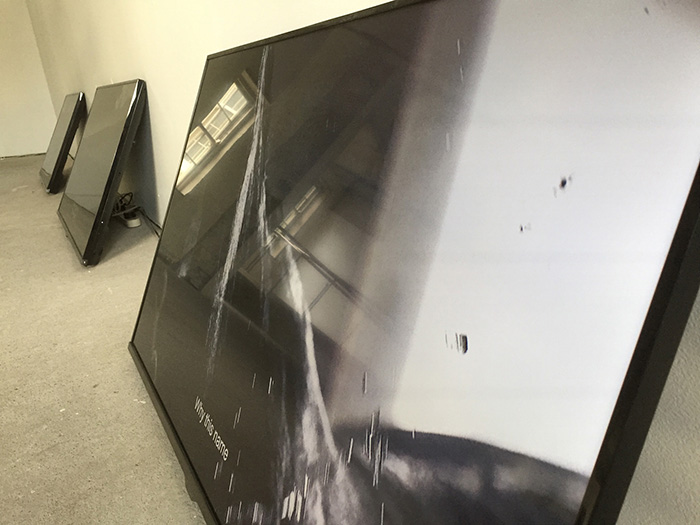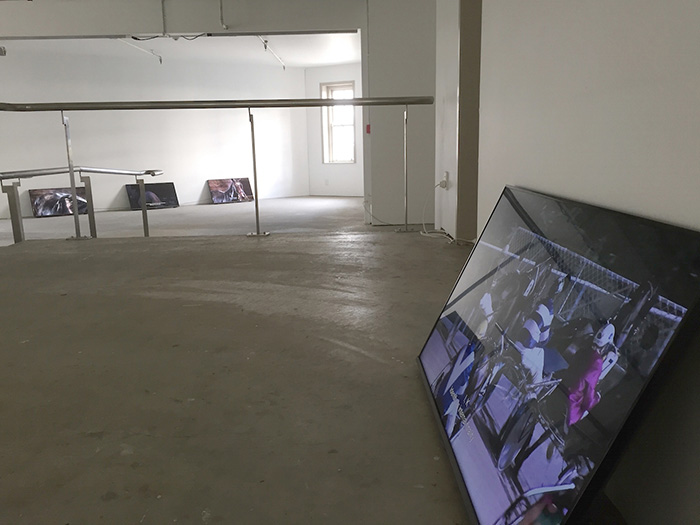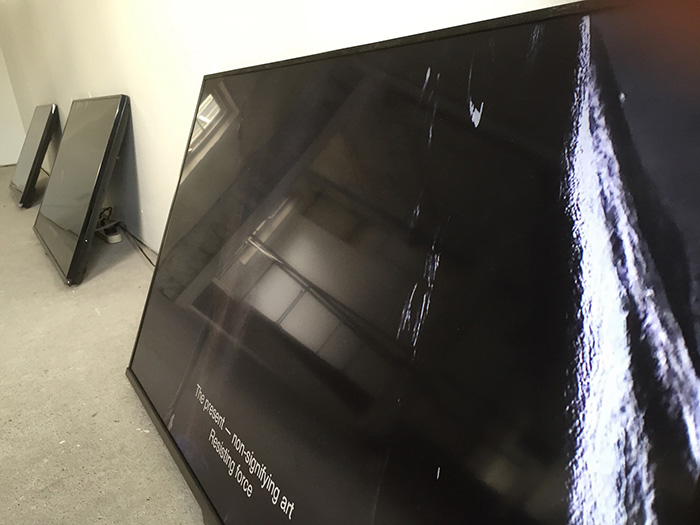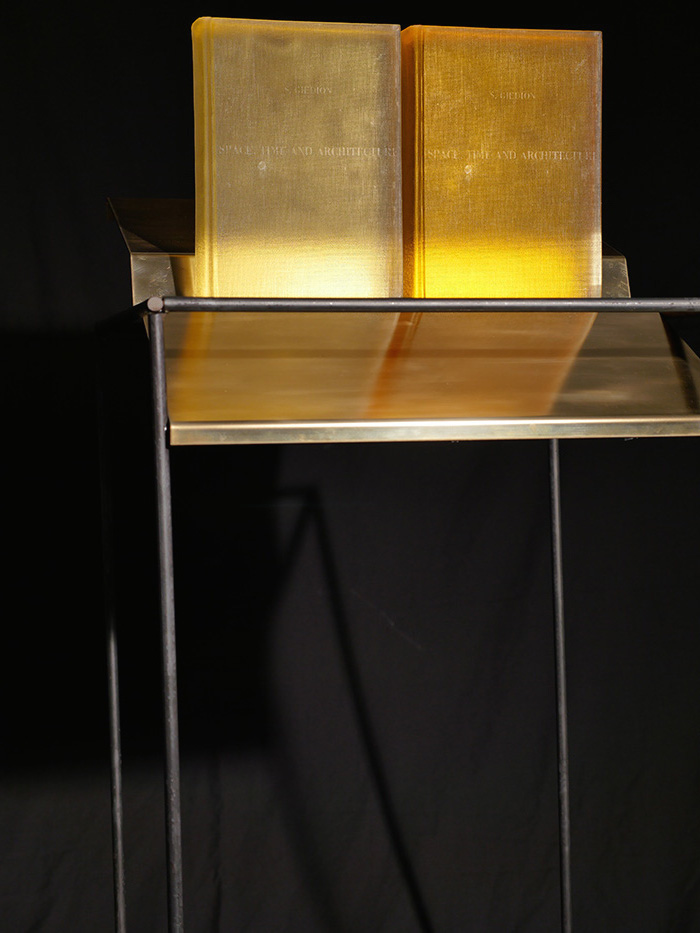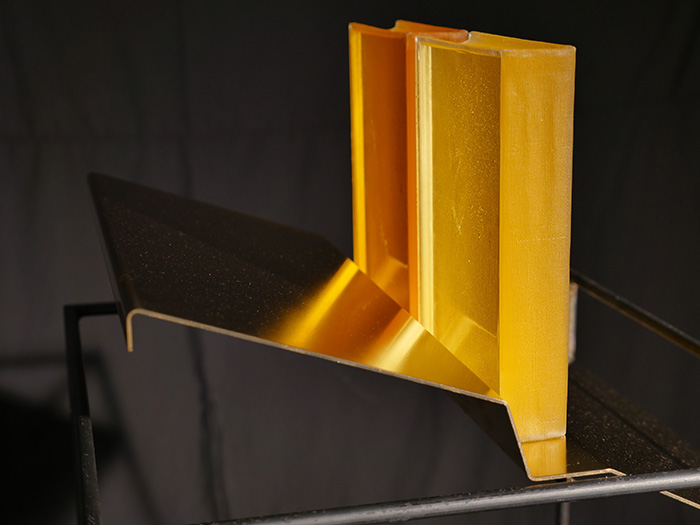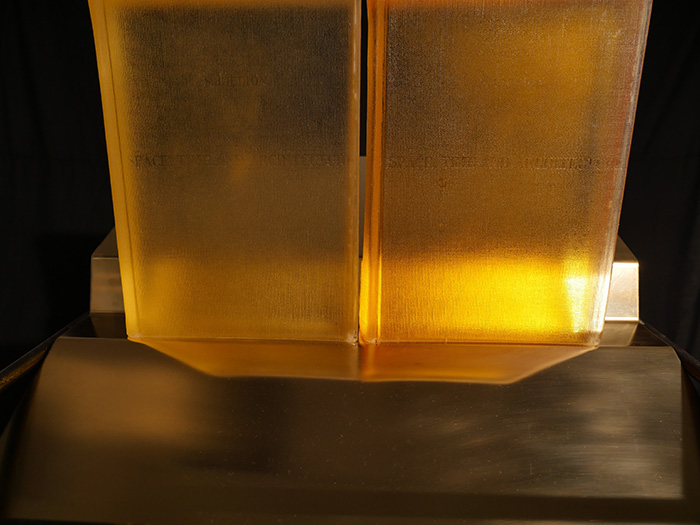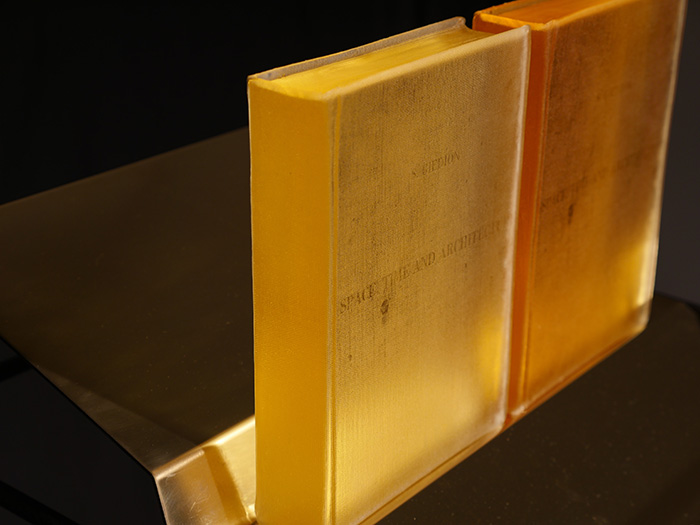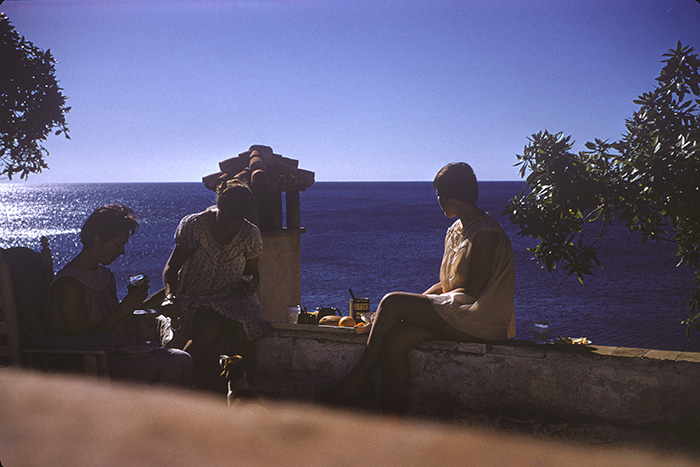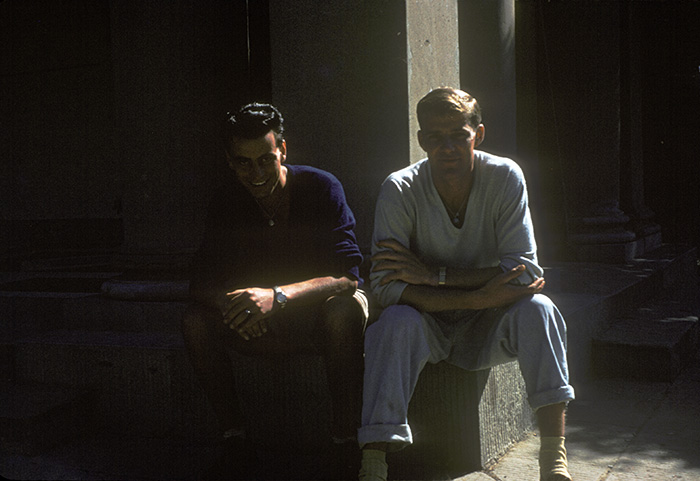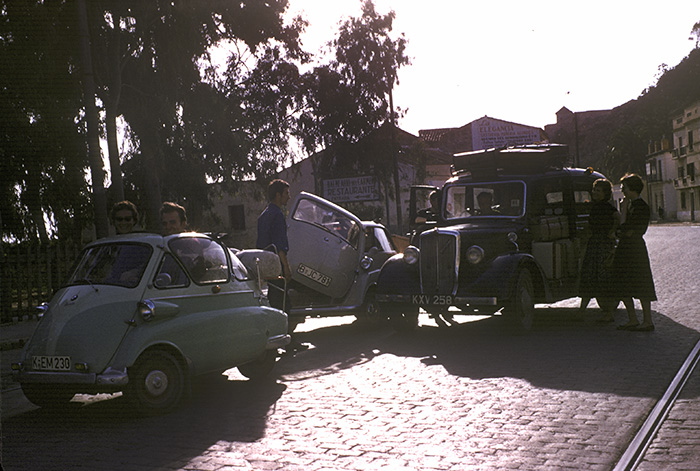1
Dark Light: A Review by Stephen Zepke
‘Dark Light’ is a beautifully difficult work. What seems to me the most difficult, but also the most beautiful thing about it is the gap it produces, insists upon I would say, between its dense text and its intense imagery. The film immediately confronts us with the problem of how to reconcile the two, but rather than providing us with an answer it instead presents this problem as its productive condition, prolonging it into an aching tension that seems to suspend its terms within a vibrating and strange moment. This moment both beautiful and difficult.
This moment or suspended 'gap' between the content of the words and that of the images seems to me to have a performative relation to the theme of the film: human relations to the animal, both the one outside and inside of us. As the words traced the limits of this impossible relation, so this impossiblity manifested in the irreconcilable splitting of the image from the word. But this 'splitting' was itself a'joining', a performative affect of inadequacy that staged itself on the very limits of description. In fact, I'm not at all sure it was 'described', inasmuch as it tried to position itself beyond the limits of language and description, at that very point where the human - and perhaps language too - takes leave of itself. But what I loved about this gesture was that it absolutely refused any destructive movements, any sublime collapse, but instead explored this gap as the formal condition of its own existence, as the ontological condition of its dark poetics.
On the level of its content this genetic tension also ordered its opposed terms: philosophy about animals (often horses) and images of horses. Without leaving this deceptively simple structure then, the film motivated its terms as vectors whose trajectories took them away from each other, deconstructing their assumed harmony to reveal a gap that was both their genetic condition, and their impossible relation. Within this carefully calibrated choreography the animal arose in all its reality - the real, the impossible real, that dark chasm between language and life. From within this chasm language and animality confront each other, the first talking insessantly while the other finds a form in the opaque and liquid gaze of those statuesque beasts. An unreadable void - dark light. We illuminate it only by destroying it, a true example of what must always be false, the veiling/unveiling of Being. To say this of a film seems odd, pretentious even, but I don't think it in any way exceeds the scope or the ambition of the film, which is quite explicit about its philosophical point. Explicit but graceful I would say, offering a performance and not a lecture. Learning by doing.
The nevertheless refuses all gestures towards presence and immediacy in favour of a very refined and meditative slippage, a kind of generous refusal, if I can put it like that. But still, for me, the animal emerged in its puzzling grandeur in the images of the magnificent sweating, steaming horse, and then later and even more mysteriously, as the two horses' backs rise out of the smoking landscape, like fish, or hills, or fearfully partial-objects. At these moments something of the 'horse' in its animality pushed itself forward, and a shiver went down mz spine that was both terrifying and delicious. At these moments the image's seemed to drown out the words so I cannot remember what was actually said. At these moments the film seemed to be moving towords its own outside, the outside of an inside/outside, perhaps?
This is already a sensation far more intense than most humans deserve. Thank you Maria for your dark light.
2
Dark Light: Ecce Equus
A Review by Robert Sinnerbrink
What is Dark Light? An essay film by Maria O’Connor, philosophical and poetic, that explores the intersection between humanity and animality, self and other, sexual difference and the deconstruction of metaphysics. It is an experiment in the medium of digital video, enacting what we could call a kind of ‘cinematic thinking’. The film takes the form of a poetic dialogue, philosophical and reflective, and recurring images of horses, horses in motion, horses moving, trotting, gazing, performing, just being, but also representations of horses, like the extended sequence of an ice sculpture of a horse being crafted while the various philosophical voices interweave with each other. This image is a striking one, the slowly melting ice, being at once shaped and formed while also dissolving and disappearing, the artist-sculptor, like the filmmaker, trying to capture the movement and vitality of animal that also refuses to be represented in a ‘cold’ artistic medium. Movement and stasis, clearly, are at play here, sculpture and the moving image, the mimetic representation of ‘horseness’ and the expressive-kinetic ‘bodying-forth’ of the horse, in the splendour of its movement, expressive physiognomy, and enigmatic presence. The slow, persistent, ‘tarrying’ with this image—which occupies much screen time in this film—accompanied by diverse voices, polyphonic, philosophic, and poetic, creates the cinematic matrix for a sustained meditation on the relationship between humanity and animality.
Philosophy merges and diverges from the image, the voice, or voices, which speak, or recite, in different languages (French, German, Italian) as they channel and challenge their philosophical authorial ‘sources’, thinkers who have challenged the sovereignty of the human, the dominion of metaphysics, those who have dared to jam the ‘anthropological machine’ by thinking ‘the animal’ (Blanchot, Nietzsche, Benjamin, Heidegger, Derrida, D&G, Agamben, among others). The voices adopt a kind of ‘free indirect’ philosophical discourse reciting but also recounting or reflecting on what their philosophical interlocutors have written about the human and its relationship with various others, notably the animal. The horses figure as a mute but expressive presence, providing a powerful visual and cinematic counterpoint to the otherwise arcane, elliptically poetic passages of philosophical meditation. How do these images of horses, in their vital ambiguity, place us as viewers, responding to thought in a dialogue of ‘other’ voices? Is this a cinematic rendering of the challenge posed by the animal to the human, to philosophy, that most ‘sovereign’ of discourses of rationality that have traditionally defined and distinguished the human from its animal origins and kinship with the non-human world? Who or what is that animal that not only exists but thinks, indeed thinks its existence, but can also render this thinking in images, images of the human and its troubled relationship with the animal?
These are some of the questions that Dark Light, whose title already provides a clue, a pointer, that we are moving in a realm of counter-Enlightenment, a domain other than the ‘philosophical’: domain that eschews the clarity, luminosity, and action-directed meaning of traditional (sensory-motor) cinema. A cinema of thought and expression, a realm of sensation and movement, whether sensation conveyed through the images of animals in movement, the movement of the ice sculptor’s hands as they carve and caress the inert ice into an animated animalian (or equine) presence, or the movement of thought, accompanied by images, that track but also trouble the ideas being voiced in the soundtrack. The slow sonorous movement of thought, of words spoken in ‘foreign’ tongues, opens up a dialogue between philosophical traditions, between movements of thought that have sought to challenge the hegemonic anthropocentrism of ‘Western’ philosophy. Here it is moving images, images of animals, of non-human life, that animate this thinking, giving it a life and a force that invites a response.
What of philosophy’s relationship with the animal? Of philosophy’s horses? All of these cinematic horses bear mute witness to a critical silence: the silence of animals, to cite John Grey, in the face of human sovereignty, with its unthinking violence and wanton destructiveness. Philosophy, nonetheless, has sometimes been capable of sustaining a relationship with the animal, indeed with the horse: one thinks of, and indeed the films remarks upon, Nietzsche’s horse, the one which Nietzsche, in the moment of his incipient madness, embraces and acknowledges as his brother. Then there are the other cinematic horses that haunt the screen as we watch Dark Light: Tarkovsky’s horses, enigmatic, expressive, incomprehensible yet expressive; the suffering horses, all of their animal kin, like the donkey Balthasar in Bresson’s masterpiece, a donkey that suffers the blows of a fallen humanity like Christ. And, again, Nietzsche’s horse, recalling the stunning opening sequence of Bela Tarr’s Turin Horse, with its static yet moving shot of a horse, Nietzsche’s horse perhaps, perhaps not, in beautiful movement and enigmatic flight, hinting or anticipating the setting of the sun, the end of days, the darkness of night. Horse and human, humanity and animality, voice and image, in enigmatic and expressive non-conincidence; all of these elements together open up a space of encounter, a Dark Light in which we might experience something called ‘cinematic thinking’.
3
Neither Light nor Language
A review by Mark Jackson
He says, there, right at the beginning, they—we—are going at each other. They—we—are making a scene. Making a scene. He says “stealthy as a wolf.” He repeats that phrase … stealthy as a wolf. And in doing so, he asks what it might mean to commence, to begin a Seminar, a lecture, with that phrase, as if one is to make a scene, as stealthy as a wolf. So begins Jacques Derrida’s The Beast and the Sovereign, an (almost) final lecture course by Derrida on what I imagine to be our concern today. If it is the ‘human’ who appears to be in his sights, it is sexual difference that will have become his question: the la and the le of sexual difference, the beast, la bête, and the sovereign, le souverain. They are at each other; they are making a scene, this beast and this sovereign. From the wealth this seminar affords us, I want to excerpt just two small themes in order to introduce a short commentary on Maria O’Connor’s essay-film, Dark Light. One concerns what stealth would always already employ, necessarily and contingently, at a moment where we precisely would not be able to tell necessity from contingency, a capacity, a capability to feign, and moreover, to feign that one is feigning. The second is the constituting moment of the human as that being which intervenes in the theo-zoological, an anthropos that mediates between the beast and the sovereign. ‘Man’ is the scene that is made in a theo-zoological struggle, in their going at each other. When we begin to think these two themes together, supposing we are able to think them at all, a question arises concerning the fundamental locale of the human as that being caught between an undecidability of a feign, or to feign, of feigning, simulating the phantasms of appearance, and of feigning that feigning, as if there is a grounding locale precisely of the human as that animal who doubles its own dissimulations and thereby thinks its divinity. That dissimulation is a becoming-contract between humans that precisely excludes from its contractual bonds the beast and the sovereign, the la and the le of sexual differences, as if the human is itself-alone self-legislating. At stake, then, is performativity—precisely making scenes of sexual differences—that I would name life-as-differentiator.
Derrida finds that philosophers eventually get around to requiring differentiation of the human and the animal: “For Heidegger as for Lacan and so many others, the point at that time was to lay a new fundamental anthropology and to reply to and for the question “What is man?” This moment has not at all been left behind, it is even putting forward new forms of the same danger” (171). Jacques Lacan is the one who suggests that while animals feign, only humans are able to feign that they are feigning. This becomes a question of light and language, seeing and saying: an animal cannot be a subject, which is to say a relation of one signifier to another, a subject of the signifier, and hence constituted in the Symbolic, in the locus of the Other. Animals have no unconscious. Their relations to otherness are specular, which is to say, confined to the Mirror Stage, as instinctual behaviour, especially in sexualizing specularity. But this specularity would never be the constituent of the Gaze, concerned as the latter is with the insistence of the letter in the unconscious, desire and demand. In short, the animal reacts instinctually, while the human responds, which is to say, as subject to the locus of the Other, to Law and transgression, the human is responsible. The animal is neither responsible nor irresponsible. The question of right, law and the good do not arise for it. This would be Lacan’s position that would as well be proximate to Heidegger’s. Derrida deconstructs this binary ‘reaction-response’, as if we could essentially mark their difference, or ground their differences. Responsibility would never be that about which we have categorical certainly: “Having doubts about responsibility, decision, one’s own being-ethical, can be, or so it seems to me, and ought perhaps to remain, the indefeasible essence of ethics, of decision, and of responsibility.” In this sense, then, an ethics would encounter in its differentiations and multiplications reactings/responses whose decidability would always already be brought into question, as if one could essentially and each time draw a line between feigning, pretending as re-acting, and pretending-to-pretend, effacing traces, as responding. This difference of re-acting and re-sponding asks for another logic of decision, another thinking of life, living beings in their sovereignty as living self-sufficiency. Neither light nor language would be the stakes in this, as if we humans, in our bestial divinity have that vantage point from which life is clarified, seeable and sayable—totalizable.
My contention is that Maria O’Connor’s film Dark Light evades all essential logics of the rational animal, all grounding assumptions of the speaking animal, all decisive and categorical thinking on the human as ethical responsibility. Its sexual differences feign, re-act and pretend-to-pretend, re-spond to another thinking of life, to an undecidability as to who or what this film is for, as if it is for no-one quite human, but yet addresses a life, singular and immediate. In this sense it evades a definition of light’s clarity or language’s wanting-to-say, intentional consciousness. Rather, in relays between visibilities and statements, it unsettles matter’s determinability into forms and a voice’s soundings into meanings. We follow neither, while yet tracing the contours of each. We seem not to know how to react nor to respond. And yet we are affected. It is this affect that I want to explore, this affective life living itself in my going along with it, that seems to me to open the semblances, re-semblances, re-actings and re-spondings to Dark Light’s archive of sounds and images.
She says—he wrote her. That’s how Dark Light commences, in more ways than one. She-he wrote, she was going at them. Without hesitation. She, at times, erased her traces. She does that, dissimulates, counterfeits all of her coins. It makes valuation chaotic, im-measureable. Vain, even—as if it is a question of looks. She and he make a scene that concerns the instability of our logics of sense, that we are irredeemably on the outside of the outside, abandoned to the oblivion of an existence whose sensibility we are forever awaiting. It never comes. All the while we have narrated the doxas of philosophical outsides, as if there is a passageway to there, as if there is an opening to the open as such, as if we masterfully master the dissimulations of life’s living without remainder—indifferently reception, conception, deception. All the while this building, this constructing, this writing and performing, this acting, re-acting and responsibility we think accedes to life, accelerates it, vivifies it. All the while we de-vivify, we take theoretical stances, disciplinary regions, as if life, my life, my living, is recoupable and re-countable. For the most part it is not. Dark Light neither says nor shows as if it is a thing, living or dead. It is not a thing we encounter, an object whose meanings encounter a subject. Its expression, its taking-notice is a making-prominent that we awhile it, and for the most part we have no determination of a ‘myself’ who encounters it. We encounter meaningfulnesses (or not) rather than a thing, expressions—meaningfulnesses from out of life living itself. This would be the counter-logic or counter-actualization of the film—neither its projections nor derivations but an alerting to our a-whiling, our living-in its company, its accompanying, its—our—en-owning. And that would also be the contingent necessity of all living.
4
A Response to Maria O’Connor’s essay-film: Dark Light
by Dr. Heeseung Irene Lee
Presented to the Centre for Lacanian Analysis —23rd, May, 2014
I need to confess that this is not an easy task to give a response to a film like Dark Light. As you can see, the film’s title already sets up a trap or gap in its paradoxical nuance – Dark Light. Moreover, I have to deliver my response in the presence of the film’s director Dr. Maria O’Connor here. What makes things even worse is that I was invited to give a response to an essay- film about art-animal-philosophy for the audience who are conscious of the fact that this event is organised by Centre for Lacanian Analysis, which implies that my response is expected to somehow open up audience’s engagement with the film from a psychoanalytic point of view. Yes, this event is a part of reading seminars of Centre for Lacanian Analysis and an immediate association I can make between the film and Lacanian analysis is that my experience of Dark Light uncannily resembles and reminds me of my ongoing experience of Lacan’s teaching – the agonising groping for a tangible meaning which is always slightly out of reach. Of course, it is my job to fabricate a plausible link between film and psychoanalysis since I am a film scholar and psychoanalyst – but this doesn’t help today’s mission very much.
What I will attempt tonight is bring up two concepts from Jacques Lacan’s opus, in the hope of making a meaningful account designating our experience of Dark Light - a film which offers an encounter with something that is not easily articulated. The two concepts to be considered are metaphor and interpretation.
I think it is not difficult for us to agree that the film Dark Light is not operative on the level of metonymy. I preliminarily frame metonymy here as a chain of signifiers constructing the narcissistic bubble of understanding or moving towards meaning and, thus, truth. In its conscious refusal of metonymic functions of image and sound, the film seems to defy any attempt to make a sense out of its rather unkind juxtaposition of incompatible signifiers. Dark Light is full of mysterious connections between images, words and voices and their persistent rejection to any perceivable coherent meaning disorients the comfortable position of audience as a skilful reader of cinematic language. Instead of reading the film in the cosy seat of a knowing audience – more so in my case on the basis of my own illusionary confidence as a psychoanalytic film critic – I had to dismiss my usual greed for meaning which transfixes the position of an audience or reader with the possessive grip on one signifier after another in the hope of paving an access to the ever elusive meaning or truth. The film deliberately interferes my reading and the abyss of Dark Light takes command. Therein, I eventually set aside the phallic jouissance of sense-making – “jouis-sance”, that tireless push of the enjoyment in signification beyond the desire for the Truth.
The hermeneutic abyss of human discourse is illuminated by the film’s light, which the director ironically claims to be dark. The erudite choice of the title reflects the very nature of the film’s use of imaginary and symbolic signifiers. They are there only to reveal the impossibility of understanding them or subjecting them to the Cartesian mould of thinking that gives the desperate ‘I’ the certainty of its existence. Such aesthetic intent of the film is comprehended better on the level of metaphor where Lacan sees poetic and creative possibility of human discourse. If I am allowed to unpack the Lacanian definition of metaphor in its contradicting relation to metonymy in more details, Lacan explains metonymy and metaphor as two fundamental operations of the unconscious - that is, the unconscious which is structured like a language. Metonymy is a more normative operation of our everyday discourse whereas metaphor is a rather wilful break from such ordinary discourse. Borrowing Lacan’s words from The Instance of the Letter in the Unconscious here, Dark Light materialises the metaphoric structure which “brings the signification in question into existence.” (Écrits, 429) In Lacan’s conceptualisation, metonymy is a function that inevitably mystifies the signification, the effect of which is a human subject – that is, the subject of the unconscious. Metonymy represses the full exposure of the very signification qua the structure of the unconscious by fuelling the fantasy of understanding something and obtaining a meaning through the diligent act of reading. However, metaphor reveals the falsity of such fantasy by unveiling the passage of the signifier into the signified and showing that the signified that is ardently sought after is nothing but another signifier which happens to be placed at the nexus of the unconscious. Just as “a dark light beyond our grasp, beyond the lingering of meaning and capture” as the film warns its audience in the beginning, an intended, preconditioned and unmovable meaning is not to be reached out for in that the film is not interested in providing a graspable message about art, animal and philosophy. On the contrary, Dark Light brings the very act of signification into existence and facilitates our experience of the existence and fundamentality of signification instead of allowing its audience to safely hide behind the effects of seemingly familiar signifiers.
Once I admit to myself the impossibility of sense-making as such, somehow I start attentively observing how the film turns philosophy to the poetics by inserting scansion. Kant, Nietzsche, Heidegger, Agamben, Derrida, Deleuze and Guattari voice their own words and cite one another. However those philosophical references are not a quotation given for my respectable study and, hence, legitimate comprehension of what they might mean. The voices of the philosophers create a poetic enigma to be experienced in conjunction with English subtitles, which rather challenge and dazzle our scopic ability to simultaneously ‘see’ the double-layer of words and images on screen. Herein, I would like to engage with the second concept from Lacan, the concept of interpretation, which Lacan famously places “halfway between enigma and quotation”. Lacan’s conception of interpretation as such, I think, corresponds to my experience of Dark Light. That is, I consistently find myself halfway between being agonised by the enigma and simply quoting and parroting the message of philosophers in mind. To put differently, what the film points at is the position of a speaking subject which never can escape afar from this midpoint between enigma and quotation. The speaking subject will never reach to one of the two ends of the signification. For a human subject, it is as impossible to get a full sense of signifiers as to arrive at the complete liberty from the fascinating illusion of understanding. If I use Lacan’s words from Seminar on the Four Fundamental Concepts of Psychoanalysis interpretation is an active search for “an irreducible signifier” in so far as this primary signifier of pure non-sense becomes a metaphor and, thus, poses the mysterious gravity of signifiers which initiates the chain of metonymy and draws the boundary of the subject’s being. The film places its central object exactly at this halfway for us to interpret. The ice-sculpture is, to me, the most lethal and penetrating object in that it oscillates between opaqueness of enigma and transparency of quotation at its own rhythm. It is very moving that the solid sculpture with almost tangible weight on screen is gradually melt into a formless block of ice only to capture the potential of numerous other forms under the laborious hands of an artist. I feel like the director herself is doing the same thing with words, images and - most of all - time in the film. That time doesn’t seem to exist between shots or between She and He or between philosophers from Kant to Deleuze and Guattari as a dominating logic of linear temporality.The time of Dark Light feels like a subtle touch of ex-sistence as it is slightly out of joint with words, images and sounds altogether just as Lacan’s neologism, exsistence re-presents the position of a subject slightly aside or outside of oneself. But only in this time of ex-sistence we, humans, might be able to live with or like horses. Thank you.
Heeseung Irene Lee
hslee0102@gmail.com
BSc, BA(Hon), PhD, Psychoanalyst-in-Training
Executive of Centre for Lacanian Analysis
Member of School of Psychoanalysis of the Forums of the Lacanian Field
